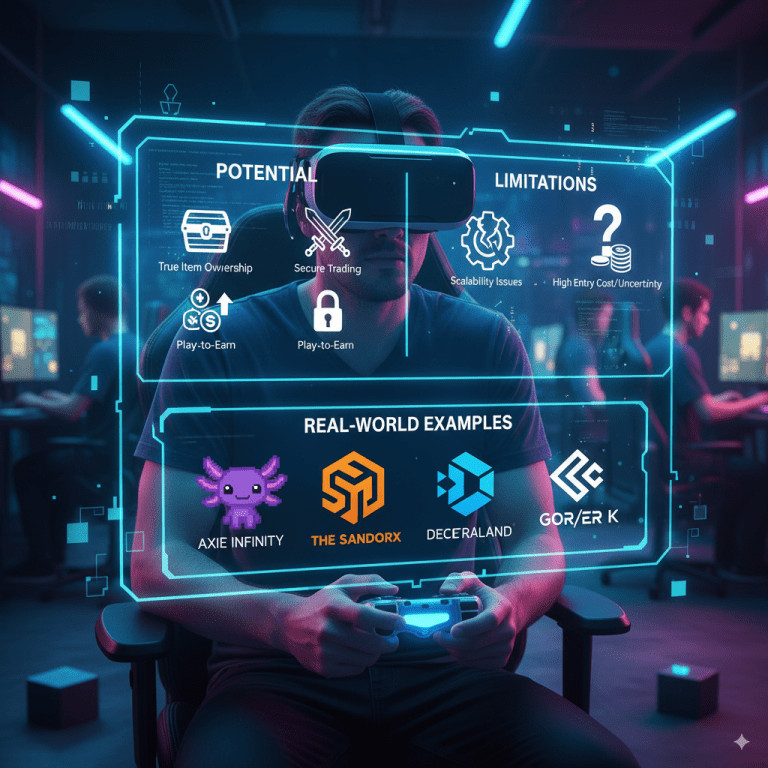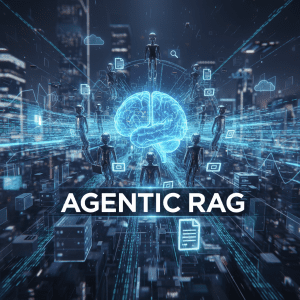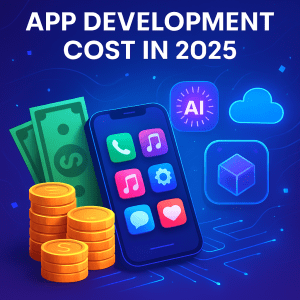Introduction
Blockchain technology is reshaping multiple industries, and gaming is one of its most promising frontiers. Leveraging decentralization, immutability, and tokenization, blockchain offers gamers and developers new opportunities for asset ownership, monetization, and security. However, as transformative as blockchain is, the gaming sector also faces challenges in scalability, adoption, and regulation.
This blog explores the potential of blockchain in gaming, the key limitations developers and players encounter, and highlights notable real-world blockchain gaming examples. For more on how blockchain and AI technologies optimize business processes, check out TechOTD’s insights.
The Potential of Blockchain in Gaming
1. True Ownership of In-Game Assets
Blockchain enables players to own digital assets as NFTs (Non-Fungible Tokens), proving uniqueness and enabling transfer or sale outside game ecosystems. This shifts control from gaming companies to players themselves, increasing asset value and player investment.
2. Play-to-Earn Models
Games built on blockchain incorporate play-to-earn (P2E) mechanics, allowing players to earn cryptocurrency or tokens through gameplay, enhancing engagement and opening new revenue streams.
3. Enhanced Security and Fraud Prevention
Blockchain’s immutable ledgers prevent hacking, duplication, and fraud in asset ownership and transactions, safeguarding both players and developers from exploitative practices.
4. Interoperability and Portability
Players can utilize digital assets across multiple games and platforms due to the interoperability offered by blockchain standards, enhancing user experience and expanding markets for developers.
5. Smart Contracts for Automation
Self-executing smart contracts automate in-game transactions, rewards, and agreements, reducing developer workload and improving transparency and fairness.
Limitations of Blockchain in Gaming
1. Scalability and Performance Issues
Blockchain networks face speed limitations and high transaction fees, which may cause lags or costly operations unsuitable for real-time gaming experiences.
2. Regulatory and Legal Uncertainties
Evolving legal frameworks create uncertainty around token classifications, player earnings, and digital asset rights, complicating compliance for game developers and players alike.
3. Steep Learning Curve and Adoption Barriers
Many gamers and developers remain unfamiliar with setting up wallets or interacting with blockchain, limiting player base and market reach.
4. Player Retention Concerns
Some blockchain games prioritize financial rewards over gameplay quality, which can lead to poor long-term player engagement.
Real-World Examples of Blockchain Gaming
1. Axie Infinity
A leader in the blockchain gaming space, Axie Infinity features collectible fantasy creatures (Axies) as NFTs, offering a compelling play-to-earn experience with millions of active users worldwide. Despite a major security breach in 2022, it remains a benchmark for P2E success.
2. The Sandbox
A virtual metaverse where users own digital land and assets, The Sandbox empowers players to create and monetize content, integrating brand partnerships and decentralized governance with its native token, SAND.
3. Gods Unchained
This free-to-play trading card game offers players true ownership of digital cards as NFTs, enabling secondary market trading and strategic gameplay similar to physical collectibles.
4. Splinterlands
A blockchain-based card game emphasizing strategic deck-building and NFTs, it awards players with native tokens and supports cross-blockchain compatibility, fostering broad player access.
5. Illuvium
An open-world RPG with high-quality graphics and NFT-based creatures, Illuvium integrates play-to-earn models and immersive gameplay, marking a premium blockchain gaming experience.
Conclusion
Blockchain technology holds transformative potential for gaming by introducing real ownership, new monetization models, improved security, and cross-platform interoperability. Yet challenges around scalability, legal regulations, and adoption remain critical hurdles.
By learning from existing blockchain games and addressing these limitations, developers can innovate compelling, player-centric experiences that redefine digital gaming economies. Stay ahead with blockchain trends and AI-powered digital innovation insights on TechOTD’s blog.
FAQs
Q1: What is unique about blockchain gaming?
True digital asset ownership, play-to-earn economics, and decentralized control set blockchain games apart.
Q2: What are the biggest challenges?
Scalability issues, legal uncertainties, and ensuring engaging gameplay beyond financial incentives.
Q3: Can players trade assets outside the game?
Yes, NFT ownership allows trading on decentralized marketplaces beyond the native game ecosystem.
Q4: How do smart contracts improve blockchain gaming?
They automate transactions and rewards transparently, reducing bugs and developer intervention.
Q5: Are blockchain games mainstream yet?
While growing fast, blockchain gaming is still emerging with big players like Sony investing but mass adoption remains in progress











